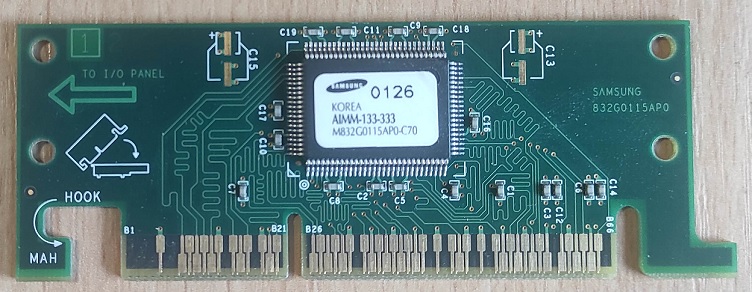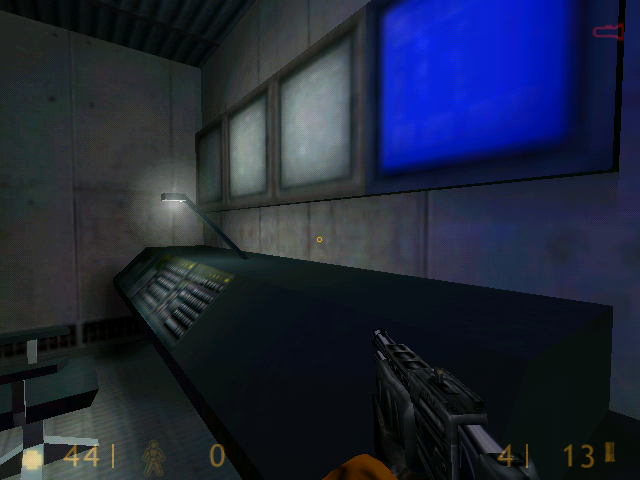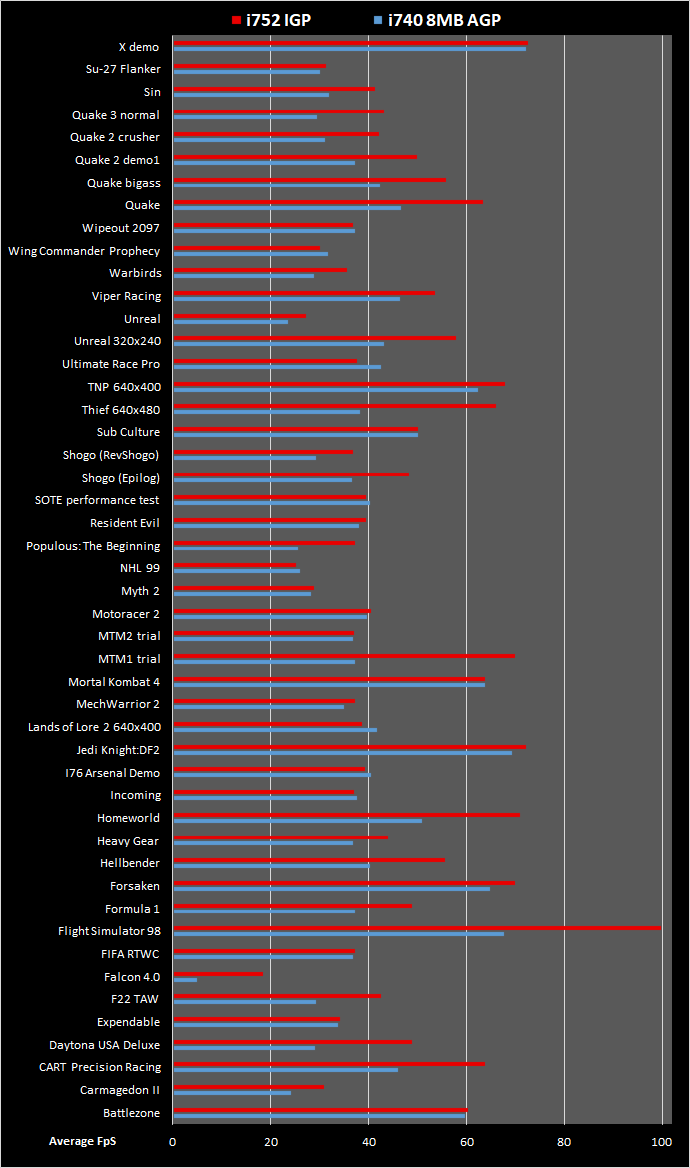Dedication to dedicated graphics card
After the i740 landed, the roadmap of the next Intel graphics products was revealed. The first evolutionary step would be the i752, codename Portola. A big leap in performance thanks to the ability to combine two textures in a single pass. Outside of that, it would try no new wild tricks, but rather bump up the frequency by a safe margin. The core ticking 50 % percent faster guarantees significant uplift. To the disappointment of many, what did not change is memory management. Still texturing from system memory, the i752 was prohibited from the high-end. In April of 1999, the card was introduced. But soon after, the whole 'dedicated graphics cards' thing was canceled. Very small numbers are rumored to get out into the wild. 50 were handed out to conference attendees by Intel themselves. Some were given for reviews. But as far as I know, no card made it into retail. Numbers so small I lost hope of ever getting one. Maybe the cancellation had something to do with 3Dfx, ATi, and Nvidia suing Real3D. Rather than dealing with legal actions, Intel cut its ties with Real3D and later Lockheed Martin pulled the plug. Intellectual property was sold to 3Dfx. One and half years was all the time Intel's discrete graphics effort lasted.
Where Portola lives
But the i752 graphics core reached many people anyway- as an integrated graphics. First in the i810 chipset, connected via an internal 100 MHz AGP bus. Its 800 MB/s bandwidth is quite higher than that of the usual AGP 2x. But of course, it has to feed all the memory accesses CPU needs. Sadly for Intel, AGP 4x was just entering the market and next to it none of these numbers were impressive. However, it has one optional feature to help the 3d acceleration: Display Cache for 4 MB depth buffer with its own 32-bit bus, also clocked at 100 MHz. The i810 without AGP connector and slow bus speeds was a low-end solution. But the i752 was also inside the follow-up i815 Solano chipset with AGP. With 133 MHz bus and Display Cache support, it could provide more of the much-needed memory throughput. And since I have the Display Cache, we can take a closer look at the "card".
 AGP Inline Memory Module or AIMM for short.
AGP Inline Memory Module or AIMM for short.The module for the i815, also known as Graphics Performance Accelerator (GPA), supports 133 MHz operation. That provides 533 MB/s just for the Z-buffer. The 4 MB capacity of the AIMM alone limits 3d resolution to 1600x1200 at 16-bit depth precision. Realistically, you will never play at a resolution that high with the i752 and 230 MHz RAMDAC would not make anything higher pleasurable anyway.
Architecture
The pipeline preprocessor batching instructions ahead of time is realized within the northbridge (GMCH). It also manages dynamic memory allocation in system memory. The Intel i752, still exploiting the AGP bus, has a very similar deep pipeline as the predecessor. Therefore you can read the i740 review for details. It starts with triangle setup unit, able to discard back-facing polygons. I am happy to report transformation speed twice faster per clock than the i740. Texture mapping was beefed up to support multi-texturing, potentially doubling the speed of mapping two simultaneous textures in pretty much whatever combination the program needs. Merely potentially because the texture unit needs a clock for each texture, but at least it applies the next pixel on same old data, alleviating the host. Texture fillrate therefore peaks at 100 MPx/s. Almost everything DirectX 6 offers can be done by the i752, including single-pass emboss bump-mapping. The other major feature added is anisotropic MIP map filtering. More traditional filters are great for textures perpendicular to the camera. But Anisotropic filter greatly improves the sampling of textures at angles. Taking into account their orientation and perspective, giving more weight to the nearer part of a texture. Implementation of classic 16-tap anisotropic filter (nowadays more known as 4x mode) doubles the number of samples over the trilinear filter. Should the solution be not balanced to handle so many texture memory reads, performance can be hurt a lot. This seems to be the case with the i752. At least in its integrated form, even trilinear filter has a noticeable impact. Anisotropic filter on textures of serious size sends the framerate down to fractions. Still interesting to play with and in old games the ability to smooth mipmap transitions is a blessing. Therefore it might be better to talk about what i752 cannot do: 32-bit precision, be it calculations, frame buffer formats, or textures.
 Accumulation of dithering can lead to weird pixel colors, but sometimes the pattern is visible immediately.
Accumulation of dithering can lead to weird pixel colors, but sometimes the pattern is visible immediately.
Moving to the year 2000 true color precision is gaining importance. If not at the output, at least as the precision of internal calculations. The i752 did not improve in these aspects upon the i740 and the image quality it produces in 3D games will become, shall we say, basic.
Experience
It can be shortly said the image quality is identical to the i740. What I did not catch in that older review is the dither pattern this architecture produces on many textures. Maybe subtle, but so pervasive it seems these chips have to convert many textures into a different format. Troubles in particular games were mostly hammered out, though the early driver was needed a few times (Thief) and occasionally performed better than the last 6.7 from 2004. With driver support stretching that far, a lack of control panel for 3d options is disappointing.
 From time to time there will be a game with white pixels among polygon seams. Check out i752 gallery.
From time to time there will be a game with white pixels among polygon seams. Check out i752 gallery.
The i752 does not try to implement any table fog, maybe that's why there is barely any smoke coming from the tires of cars of Ultimate Race Pro.
Performance
I called the i740 the most mature graphics solution out of the wide "1st generation" I've been through. That is why I want to have it in comparison, besides the obvious question of how much faster the i752 is over its ancestor. Some tests which are no longer informative are omitted but don't worry, they will be replaced with ones better suited for the newer era.
 As usual, click to see minimal framerates.
As usual, click to see minimal framerates.
Looking at the values one might ask why isn't the i752 pulling ahead in a rather modern game like Incoming. The demo used is the only one in the list with trilinear filtering enabled- and the i752 is, as far as I remember, the first one to render a true trilinear filter, taking four samples from two different mipmaps at once. Averaging over all the results the integrated i752 leads by some 25 % over the best i740 card. That is with the help of the GPA. Without the module, there would be hardly any performance advantage- whith this selection. Falcon 4.0 is a taste of a more demanding game crushing first generation accelerators and on the i752 frames are finally moving. What can we estimate about the i752 discrete card then? Having a whole frame buffer in local memory guarantees higher results. But taking into account not so phenomenal framerates we saw, the Pentium III used is unlikely to completely choke on bandwidth alone. You might want to try 800x600x16 a try and if the dithering pattern gets to you, I say you should, because it becomes more subtle with increased pixel density.
End of discrete story
The i752 graphics cards would be an incremental upgrade to the i740. Prepared for release in spring 1999, the computer makers were not at all interested in it. It was the time when other value options emerged, like the Savage 4, that was distinctively more modern. Intel aborted the chip before high volume production and instead of improving they chose to scrap the whole discrete video business almost immediately. Another victim was new generation project i754, a high-performance AGP 4x chip scheduled for fall 1999. Lockheed Martin euthanized Real3D in October and sold its intellectual property to Intel. Real3D staff ended there as well or chose always hungry ATI, also in Orlando. Every end is the beginning of something new. Intel was the biggest vendor among chipset makers. Although SiS and Via might have provided more capable integrated 3d accelerators, Intels were just good enough to maintain their position. To this day Intel has not come out of its fortress of integrated graphics, but ambitions are still there as Larabee projects prove. Just remember the lesson of i740: if you want to sell to a gamer, better make sure your product stands up to your hype. Especially when you are named Intel.